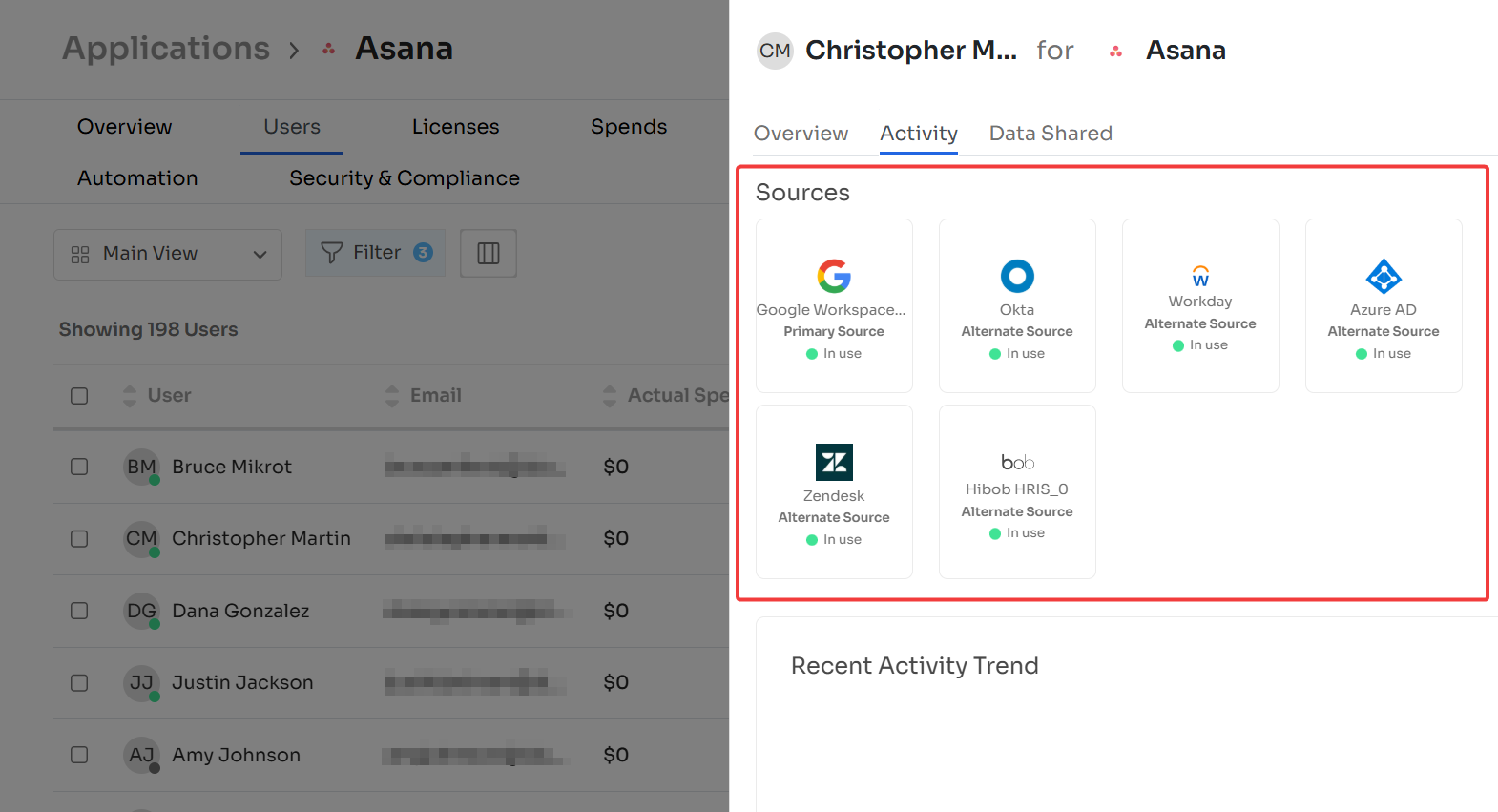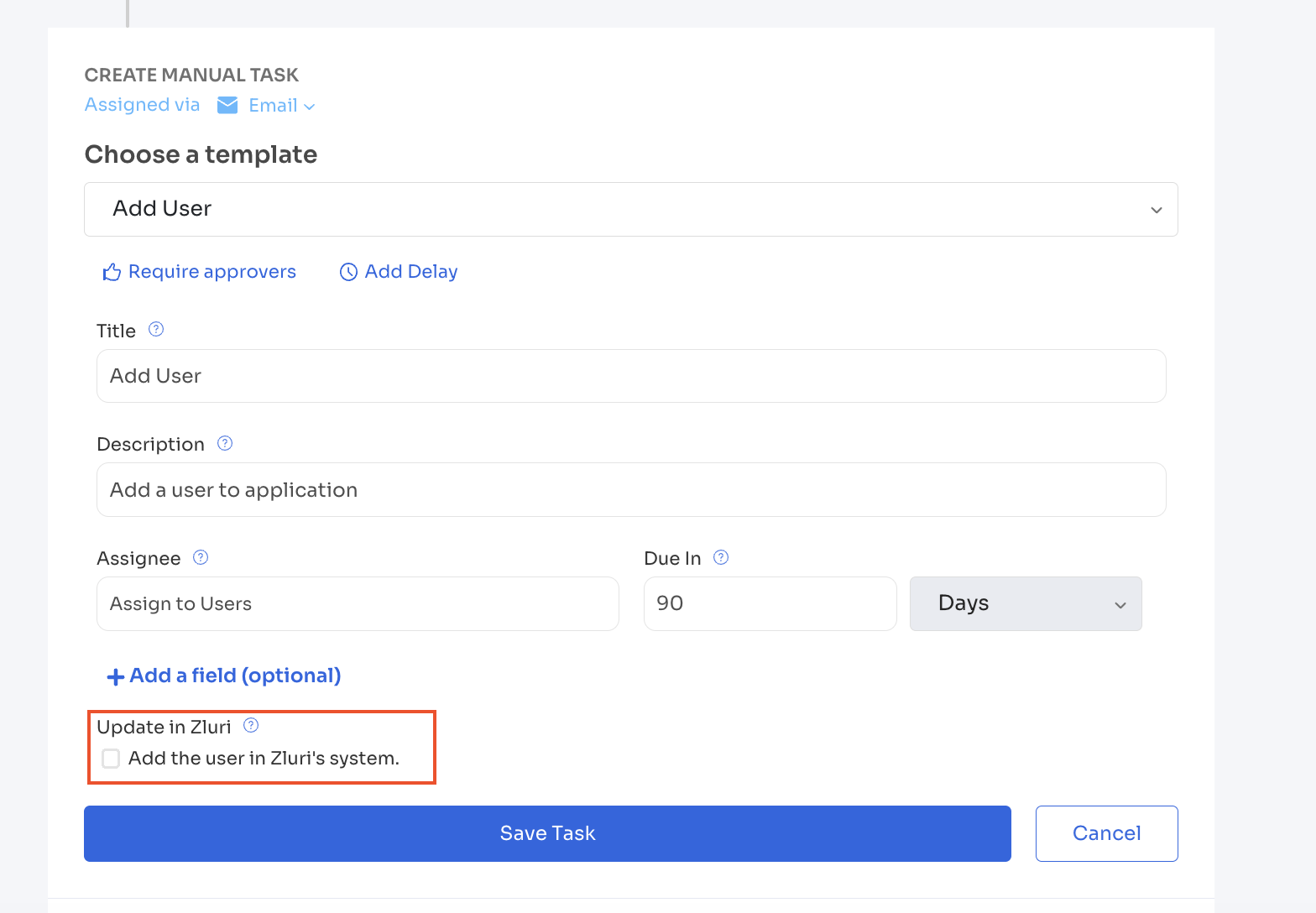Application User Status
Understand how Zluri prioritizes and processes application user status sources
Zluri pulls user data from multiple sources and selects a primary source based on a predefined priority system. This can be an integration, SSO, agent, workflow, or a manual addition.

Default source priority
Zluri prioritizes sources from highest to lowest as follows:
- Manual entry or workflow (whichever is marked as primary)
- Direct integration
- SSO (e.g., Okta, Google Workspace, Azure AD, OneLogin)
- Indirect integration (e.g., if both Jira and Atlassian Admin are connected, Zluri prioritizes the direct Jira integration)
- Browser or desktop agents
If multiple sources exist within the same category (e.g., both Okta and Azure AD), Zluri assigns the first detected source as primary.
Source-specific logic
Here's how Zluri prioritizes and processes data from different sources, including manual entries, workflows, SSO, integrations, and agents to ensure accurate and reliable user and application insights:
Manual entry
Zluri marks Manual as the primary source when you manually add or update a user. Integration syncs cannot override this status.
Workflows
When you use a post-action in a workflow, Zluri marks the workflow as the primary source.
If you wish to keep the direct integration as the primary source instead, uncheck the Add the user in Zluri's system box while creating the workflow.

SSO (e.g., Okta, Google Workspace, Azure AD, OneLogin)
When Zluri detects an app through multiple SSOs, it assigns the first-discovered SSO as the primary source.
For example, if Zluri first detects Zoom through Okta and later through Azure AD, it sets Okta as the primary source. If there are differences between the two, data from Okta takes precedence.
Zluri determines the app user's status from SSO data as follows:
- If the API provides the app user's status, Zluri uses the API data. For example, Okta provides the app user's status via its API, so Zluri uses the status Okta sends.
- If the app user's status is unavailable, Zluri applies this logic:
- Marks the app user as active if the record comes from the API and the user's status is "active."
- Marks the app user as inactive if the record stops coming from that source, or, if the user's status is "inactive."
Direct vs indirect integration
Direct integration
Direct app integrations take priority when multiple connected integrations provide data for the same app. If Zluri receives status from a direct integration, it uses the user status provided by that integration.
For example, the Atlassian Admin integration provides user data for all connected apps from the Atlassian suite such as Jira and Confluence. If you've connected both Atlassian Admin and Jira integrations, then Zluri will give precedence to the direct Jira integration.
Indirect integration
For indirect integrations, Zluri applies logic similar to SSOs:
- If the API provides the app user's status, Zluri uses the API data. For example, if Slack provides the app user's status via its API, Zluri relies on Slack's status.
- If the app user's status is unavailable, Zluri uses this logic:
- Marks the app user as active if the record comes from the API and the user's status is "active."
- Marks the app user as inactive if the record stops coming from that source or the user's status is "inactive."
For example, if Zluri discovers Zendesk for a user via Slack, it marks Zendesk as active as long as Slack continues to detect Zendesk for that user in the most recent sync and Slack reports the user's status as "active."
If Slack stops reporting Zendesk for the user or the user's Slack status changes to "inactive," Zluri marks Zendesk as inactive.
Browser / desktop agent
When browser or desktop agents are the sole sources of an app, Zluri marks the app as inactive if the user does not use it for 30 days or more.
Customize source priority
To view and/or modify source priority for specific apps, refer to this document.
FAQ
1. Why does Zluri show some users as "Active" in an app when they haven’t used it for 30+ days?
This might happen in cases where users are discovered from a source like SSO instead of a direct integration. Many SSOs such as Google Workspace mark an app as "Active" if the user has logged in even once using their Google account — actual usage data is ignored.
Zluri will show an app as "Inactive" only if the SSO does not detect the app anymore (e.g., if the user disconnects the app from their Google Workspace account).
Steps to resolve:
- Check the sources for the app’s discovery. Refer to this document for instructions.
- In case the source is SSO, look for a direct integration in the Integrations Catalog.
- Connect the direct integration if available, as they are usually the most reliable way to get app-specific usage data.
2. We have 300 users in an app (eg., Jira). However, Zluri only shows 280 users in the dashboard. Why the discrepancy and how do we fix this?
This might happen in cases where users are discovered from a source like SSO or Zluri agent instead of a direct integration.
Steps to resolve:
- Check the sources for the app’s discovery. Refer to this document for instructions.
- In case the source is SSO or Zluri's browser/desktop agent, look for a direct integration in the the Integrations Catalog.
- Connect the direct integration if available, as they are usually the most reliable way to get app-specific usage data.
For further assistance, please feel free to submit a ticket or contact us directly at [email protected].
Updated 3 months ago
